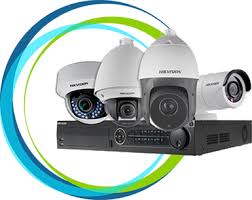In an age where security concerns are paramount, the installation of Closed-Circuit Television (CCTV) systems has become a necessity for safeguarding both residential and commercial properties. CCTV cameras serve as vigilant eyes, providing round-the-clock surveillance and deterrence against potential threats. Whether you're looking to fortify your home or business premises, understanding the nuances of CCTV installation is crucial for maximizing its effectiveness. Let's delve into the essential considerations and steps involved in setting up a robust CCTV system.
Planning Phase:
Before diving into installation, meticulous planning is imperative to ensure optimal coverage and functionality. Begin by conducting a thorough assessment of your property's layout, identifying key areas requiring surveillance such as entry points, blind spots, and valuable assets. Consider factors like lighting conditions, weather exposure, and potential obstructions that could impact camera performance.
Camera Selection:
With a myriad of CCTV cameras available in the market, selecting the right ones tailored to your specific needs is vital. Options range from traditional analog cameras to advanced IP cameras offering high-definition resolution and remote monitoring capabilities. Choose cameras with features like night vision, motion detection, and pan-tilt-zoom (PTZ) functionality for enhanced surveillance versatility.
Placement Strategy:
Strategic placement of cameras is paramount for comprehensive coverage and maximum deterrence. Position cameras at vantage points to monitor high-traffic areas, chokepoints, and vulnerable spots prone to intrusion. Ensure adequate overlap between camera views to minimize blind spots and optimize surveillance continuity.
Wiring and Connectivity:
Efficient wiring and connectivity are essential for seamless operation and data transmission within the CCTV system. Opt for quality cables and connectors suited to the environmental conditions of your installation site. Consider the feasibility of wired versus wireless setups, weighing factors like reliability, signal interference, and range limitations.
Recording and Storage:
Selecting the appropriate recording and storage solution is crucial for archiving footage and facilitating retrospective analysis. Choose a Digital Video Recorder (DVR) or Network Video Recorder (NVR) capable of supporting the number of cameras in your system and offering sufficient storage capacity. Implement redundancy measures such as cloud backup or off-site storage to safeguard against data loss or tampering.
Integration and Monitoring:
Integrating your CCTV system with supplementary security measures enhances its efficacy and responsiveness. Incorporate features like remote monitoring via smartphone applications or integration with alarm systems for real-time alerts and proactive threat mitigation. Explore options for integrating advanced analytics such as facial recognition or license plate recognition for enhanced situational awareness.
Compliance and Legal Considerations:
Ensure compliance with relevant privacy regulations and legal requirements governing CCTV surveillance in your jurisdiction. Respect privacy boundaries by avoiding camera placement in areas where individuals have a reasonable expectation of privacy, such as restrooms or changing rooms. Display conspicuous signage indicating the presence of CCTV cameras to inform and deter potential intruders.
Maintenance and Upkeep:
Regular maintenance and upkeep are essential for preserving the functionality and longevity of your CCTV system. Conduct periodic inspections to check for camera malfunctions, lens obstructions, or cable damage. Keep cameras clean from dust, debris, and inclement weather effects to maintain optimal image quality and performance.
Conclusion:
The installation of CCTV systems serves as a proactive measure in fortifying security and enhancing peace of mind for property owners. By adhering to a systematic approach encompassing planning, camera selection, placement strategy, connectivity, recording, integration, and compliance, you can establish a robust surveillance infrastructure tailored to your specific requirements. Stay vigilant, stay secure, and let CCTV technology serve as your steadfast guardian in safeguarding what matters most.


No comments yet